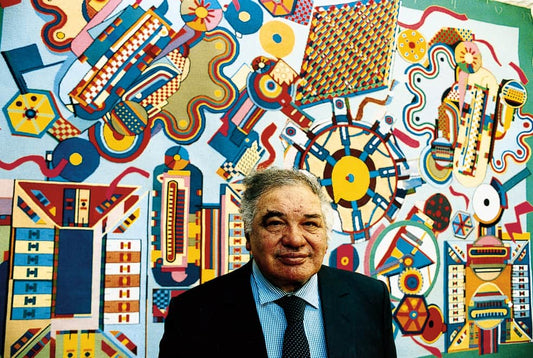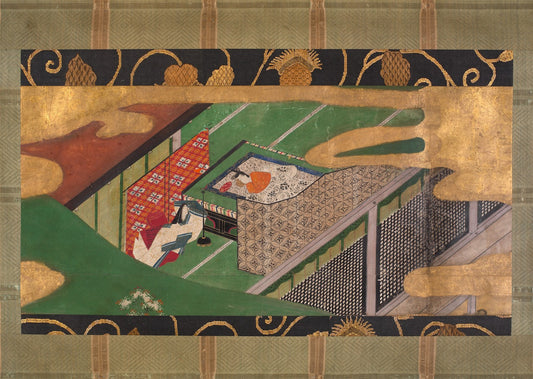Feature image: The Kiss closeup via Christies
7 Romantic Paintings to Remind You Love Still Exists
If there’s one universal theme that has always been powerful in paintings, it would be love. For centuries, artists have interpreted their versions of love on canvases across the globe, evoking intimate connections between artists and viewers everywhere. There’s no denying that romance in art is a powerful theme. Whether you’re a hopeless romantic or a true love skeptic, there’s a piece of art that captures your feelings toward love.
Portrayals of love in paintings have ranged from tender fleeting moments to passionate declarations to somber loving reflections. If you want to get in the Valentine’s Day mood or just want a reminder that love exists, this list is made for you. There’s no limit to the forms that love can take, just like there’s no limit to the love you can feel, and these ten paintings capture the concept perfectly.
1. Il Bacio (The Kiss), 1859, by Francesco Hayez
This Italian Romanticism piece is often lauded as one of the world's most romantic paintings. The painting portrays two individuals locked in a passionate, yearning kiss. Subtle details such as his hand cradling her face and his foot resting on the step to give him a better angle to kiss her add to the deep, loving feeling this painting portrays. The lovers are captured in a soft glow of light, yet in the background, a shadowy outline is seen lurking, perhaps indicating the lovers will not be safe for long.

While on the surface, this painting appears to simply be about a loving couple, it also represents the love and nationalism Francesco Hayez had for Italy. Many historians have interpreted this piece as a coded message promoting the unification of Italy, which was heavily repressed at the time due to the ruling of the Austrian Empire. The shadowy figure in the background of the painting represented the outer authority over Italy at the time, and the young man in the painting is believed to be an interpretation of the young Italian men going off to fight for independence and for the love of their home.
2. Romance, 1931, by Thomas Hart Benton
Thomas Hart Benton’s take on romance in this piece is to show a quiet, tender moment between two lovers on a moonlit night. The two subjects of the painting appear to be coming home from a moonlit stroll, with the man in the painting holding his dress shoes in one hand and his wife’s hand in his other. The peaceful smiles on both their faces give the painting a sweet feeling.

Benton was well known for his depression-era art that captured the everyday life of people in the Midwest. While his subjects don’t have the most luxurious life, he was still able to capture their happiness with each other. The soft, curved lines in the painting create a dreamlike appearance that captures the dreaminess we often associate with true love. You can see how in sync this couple is as their feet appear to rise and fall at the same pace while they walk, offering the viewers an intimate portrayal of what everyday love can be.
3. The Musicians, 1595, by Carvaggio
At first glance, it may be difficult to understand how this painting captures love. But if you look closely, you’ll notice that one of the four figures in the painting appears to be Cupid, signaling that perhaps there is a deeper emotional plot to this painting than the first impression offers. While not portraying love in the traditional sense, the painting captures the performers’ intense need to play music and sing their songs in such a way that it could be interpreted as love. As the boys sing we see their eyes appear glassy, as if the act of music has brought on such an intense wave of emotion the players are moved to tears. This painting captures love in the more abstract sense, that love doesn’t have to be reserved only for people but for activities and art as well.

The figure portraying cupid in this piece is seen eating grapes while listening to the performers, possibly indicating that the act of creating music is sustaining love. Also spotted in the painting are Cupid’s gold tip arrows, which were said to cause those pricked by them to have an uncontrollable love and desire. The painting seems to suggest the idea that love, music, and art are all perhaps one and the same and that to sustain one, you must sustain all.
4. Embrace (Lovers II), 1917, by Egon Schiele
This painting shows the erotic, passionate side of romance. This painting portrays a nude couple lovingly entangled in sheets, their arms wrapped around each other. It feels like a very realistic depiction of sexual attraction in love without coming across as pornographic. The painting celebrates intimacy without reservation and was an important part of the modernization of sexuality in the early 1900s.

Egon Schiele painted this piece at a time when opinions and ideas of how sexuality and love were perceived were evolving to reflect the current conceptions of these ideas. The lovers lay upon a white sheet, symbolizing purity, an interesting juxtaposition given the actions present. But this was intentional on Schiele’s part to normalize these desires and actions. Schiele brings a sense of rawness to the piece with his use of rough lines and uneven texture, which heightens the emotional state of the subjects. The hints of red in the skin tone add to the passionate feel of the painting, resulting in a moving portrayal of erotic romanticism.
5. The Lovers II, 1928, by Rene Magritte
Surreal and somber are the first two words to come to mind when looking at Rene Magritte’s interpretation of The Lovers. The identities of the subjects are concealed with a white veil that separates the pair from connecting lip to lip. The darker colors of the painting cast a dreary feeling across the canvas, and yet we still feel the care and love between the two subjects. Magritte stated that “nothing is concealed in this painting,” when interpreting this statement from the artist, it feels as if it's asking the viewers not to speculate too much on the identities of the veiled subjects.

You could interpret this piece as a testament to how love conquers all, no matter the circumstances. Despite being separated, you can still feel the love between the pair and how they trust their intuition to guide them. A more popular interpretation is that this is a love that is beginning to meet its end. While the moment is still kind, the muted colors and slowly dominating veil offer a narrative that perhaps this love is not meant to last.
6. The Birthday, 1915, by Marc Chagall
This dreamy painting captures the fun and whimsy of being in love. It depicts the artist and his wife. Chagall had to fight to marry his eventual wife, Bella. Her parents were apprehensive of the marriage, but the two were so in love that they went through with it anyway. Chagall painted this celebration of their love a few weeks before their wedding. Bella holds a bouquet of flowers in her hands while he floats above her. Chagall quite literally paints himself head over heels for his wife.

The paintings' soft lines and blurred appearance invite the viewers to soften their own perceptions as well. It is a surreal depiction of love that shows how love can transform us. There are no grand gestures or dramatic narratives in the painting; the setting appears to be the couple’s bedroom. Making this a romantic interpretation of domesticity in love as well. The bright red carpet in the room suggests the passion of this romance, and Bella appears to begin floating as well. Love doesn’t always have to be so severe, and Chagall captures this idea in a creative, memorable way.
7. The Reunion of Cupid and Psyche, 1793, by Jean Pierre Saint-Ours
Rounding out our list is a painting depicting the Cupid and Psyche myth. The myth goes that Aphrodite was jealous of the beautiful Psyche and sent Cupid to make her fall in love with a hideous beast. Cupid could not go through with this as he fell in love with Psyche. Through trials and tribulations, Cupid and Psyche eventually unite and fall in love. They are the ultimate story of how true love perseveres. In this depiction, we see Cupid lifting Psyche into the air; they both lock eyes and have looks of wonder on their faces.

This dreamy interpretation of the story focuses on the lovers' passion. Psyche is grabbing Cupid’s bow and arrow, suggesting she has become smitten with him. Two doves fly close by, and while doves traditionally symbolize Aphrodite in this context, we can take it as a symbol of the two lovers. This classic interpretation of the ancient myth is a powerful testament to how love stories can stick with us for thousands of years.
Whether you have that special someone in your life already or are still on your journey to finding your one true love, the history of art has shown us time and time again that love does exist, and when we find it, magical things can happen. Love continues to be one, if not the most, popular theme throughout art, and it's easy to see why. It is a feeling that exists in every culture, language, and belief. Love is one of those rare subjects that can truly unite us all. Next time you visit your local art museum, see how many pieces there depict some version of love. You might be surprised to see just how prominent this idea is.
©ArtRKL™️ LLC 2021-2024. All rights reserved. This material may not be published, broadcast, rewritten or redistributed. ArtRKL™️ and its underscore design indicate trademarks of ArtRKL™️ LLC and its subsidiaries.





